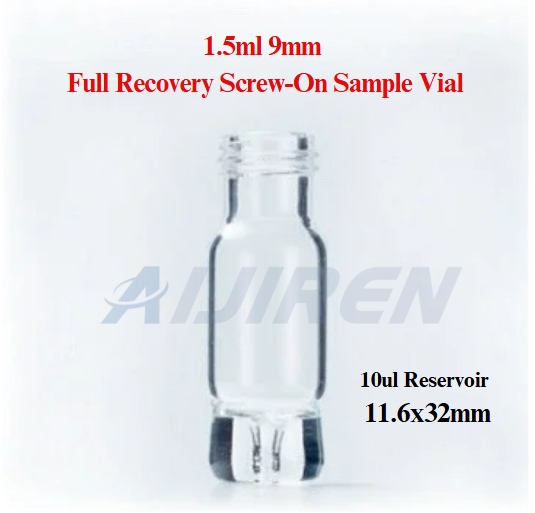Hot Sale High Quality High Recovery Vial for HPLC
The main attraction of the 1.5 ml high recovery vials (30 μL capacity) is the small volume. This makes them ideal for applications where only micro-volume testing can be performed, such as bioanalysis, proteomics, or stable substances with limited handling. However, the small volume also means that any mistakes during handling can have a significant impact on the final result.
When using these micro-volume reagent vials, it is important to always keep the reagent vials in the correct position. The 30 μL reservoir is located at the bottom of the reagent vial, and the test can only be pipetted or aspirated from this position. Avoid tilting or rearranging the reagent vials, as this will cause the test to move into the larger 1.5 ml volume, making it more difficult to recover the full volume.
In addition, be careful when handling the reagent vials. Avoid shaking or vortexing vigorously, as this may create bubbles or cause the reagent to adhere to the walls of the reagent vial, resulting in reagent loss. In addition, be gentle and steady when mixing or changing reagents. Any sudden or violent movements may disturb the sensitive reagent level and cause unexpected loss.
The glass material of these vials is generally inert and compatible with a wide range of solvents and analytes. It is still important to confirm compatibility of a specific test with any additives or diluents. Some compounds may adsorb to the glass surface, resulting in reduced recovery.
Consider sample safety requirements when storing these fixed vials. Some unstable or sensitive compounds may require storage at specific temperatures, such as refrigeration or freezing, to avoid deterioration. Follow recommended storage conditions to ensure long-term accuracy of the test. Improper storage, such as exposure to heat or light, may result in undesirable test changes or losses.
For an article on storage and handling, please see this article: How to Store and Handle 1.5ml Glass High Recovery Vials Properly?


























